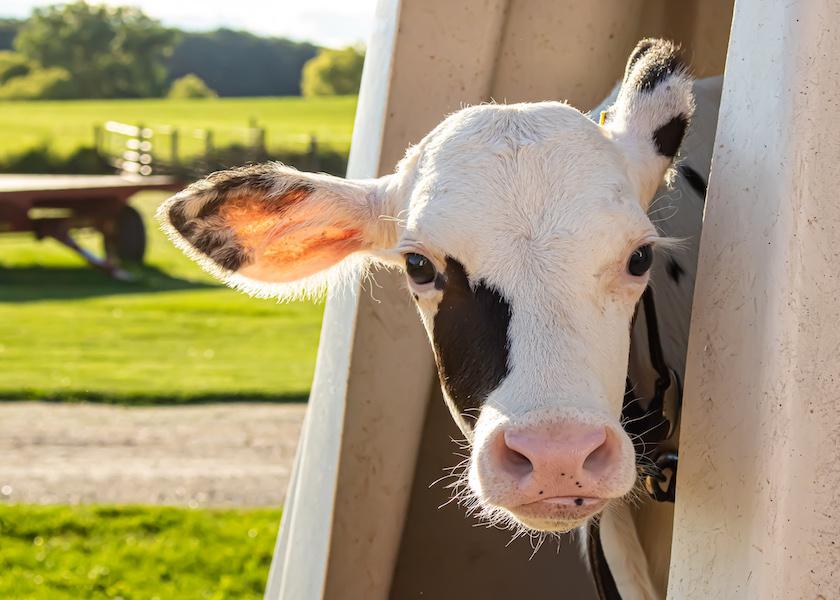Essential Oils Earn a Seat at the Calf Management Table

There was a time when more than half of all milk replacer fed to preweaned dairy calves in the United States contained sub-therapeutic levels of antibiotics.
This practice was thought to be an “insurance policy” against scours and pneumonia during calves’ vulnerable, early weeks of life. But concern for the development of antibiotic resistance has all but eliminated low-grade antibiotic supplementation through gradual regulatory changes – not just in the U.S., but worldwide.
A recent South Dakota State University study evaluated the use of combination essential oil and prebiotic products as additives to colostrum and milk replacer. The goal was to determine if either or both products could promote immunity and stimulate appetite to diminish health challenges and stress experienced by newborn calves.
Both supplements evaluated contained a blend of oregano and thyme essential oils and arabinogalactan prebiotics. The colostrum product was delivered in liquid form and the milk replacer supplement was in powder form.
The study of 61 calves compared the effects of the supplement delivered (1) with colostrum (10 mL at birth and 10 mL 12 hours later) in addition to milk replacer (1.25 g/day); (2) at the same dose in milk replacer only; and (3) in neither feeding category (control). Weaning was at 42 days.
All calves in the study had similar average daily gains, body weight and growth measurements. Calves fed the colostrum supplement showed higher IgA titers, signifying an increase in immune response and improved immune status to help resist diseases and pathogens.
Another study by Chinese researchers evaluating a similar product added to starter grain showed that supplemented calves versus control animals had greater dry-matter intake; improved feed conversion; increased body frame growth; lower scours incidence; and greater blood volatile fatty acid concentrations, indicating enhanced ruminal development.
Researchers also are exploring essential oils to address another concern of modern calf rearing: antibiotic residues in waste milk, and their potential to create resistant bacteria in calves.
A study at the University of Reading in England examined the effects of feeding a 100% natural oregano essential oil on the population of antimicrobial resistant bacteria in the feces of calves fed waste milk.
One group of calves was fed waste milk supplement with the liquid oregano essential oil product at 10mL/calf/day for 10 days, while the other (control group) was fed the same waste-milk ration with no supplement. After 10 days, all calves were fed identical diets of non-supplemented waste milk and concentrates until weaning.
In the feces of the control calves, 44.1% of the E. coli present were resistant to the cephalosporin antibiotic cefquinome. The calves supplemented with the essential oil had only 12.6% of E. coli that were resistant to the same drug. In addition, the supplemented calves shed cryptosporidium in significantly lower amounts.
Essential oils are “Generally Recognized as Safe” for animal use by the U.S. Food and Drug Administration, and are suitable for organic as well as conventional livestock production. Research also is underway studying the effects of essential oils on adult dairy cow productivity and rumen function.







